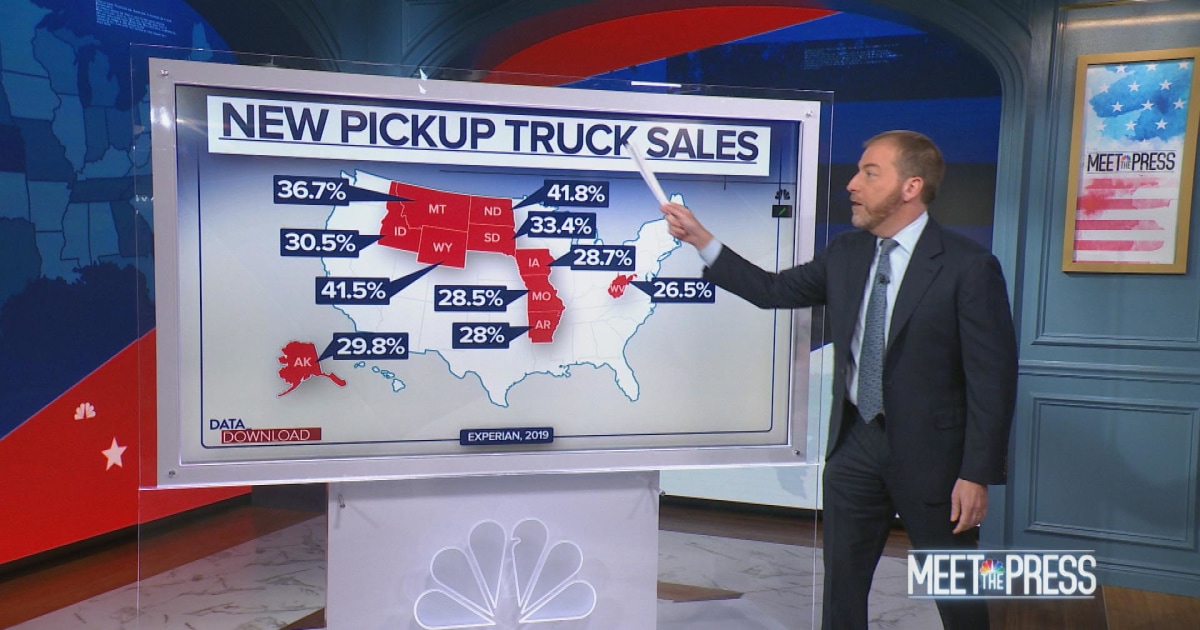
WASHINGTON — As Thanksgiving and Christmas near, it's not uncommon for consumers to talk (and grouse) about gas prices. It's as much a holiday tradition as Hallmark movies. But this year, the story is a little different. The last 12 months have seen a spike in gasoline prices as life has returned to something closer to a pre-COVID norm and travel has returned.
And if you look closely at the data, you can see that Democrats and Republicans may be experiencing this year's pump pain differently – a real-life, unintentional impact of the self-sorting that has come to define modern American politics.
While the annual complaints about gas prices are expected, there is some truth behind the griping this year. Prices are noticeably up and not just compared to last year.
This November the price for an average gallon of gas ($3.38) is the highest it has been since 2013, according to the Energy Information Administration.
To be clear, that is not the highest price ever for a gallon of gas. In fact, adjusting for inflation, it’s not even close. But, as it so often is with the economy, it's a perception that matters to voters and right now a lot of voters perceive the prices as sky-high. That’s especially true compared to last year when prices were artificially low due to the reduced travel that came with the pandemic’s first year.
Those perceptions vary sharply depending on your politics and where you live.
As we have noted often in the Data Download, the GOP has a massive rural footprint. It’s why county maps of election results usually seem to show a Republican edge. A huge number of self-identified Republicans live in rural, sparsely-populated areas. And when you live a rural lifestyle, a bump in gas prices can cause sharp pain.
You can measure the challenges in two ways: the amount of driving rural people have to do and the types of vehicles they tend to own.
Vehicle Miles Travelled (or VMT) per capita shows the first half of the equation. Consider the top ten states for VMT per capita in 2018, according to an analysis from Sivak Applied Research, a transportation research firm.
Of the top 10 states for VMT per capita, eight voted for former President Donald Trump in 2020 – Wyoming, Alabama, Mississippi, North Dakota, Missouri, Arkansas, Indiana and Tennessee. The two exceptions are New Mexico, which is a rare heavily rural state that tends to vote Democratic, and Georgia, which President Joe Biden won by only a hair.
Georgia may look like something of a less-rural outlier in the group, but it's in the list in part because the Atlanta metro area is a sprawling behemoth that holds 29 counties. Getting around that area can take a lot of time and a lot of miles, as most metro Atlantans will tell you.
On the other end of the driving spectrum, the reverse is true. Of the 10 states with the lowest VMT per capita, only one voted for Trump in 2020: Alaska. Alaska is obviously very rural but also does not have a lot of roads.
And beyond the higher amounts of driving in Republican states, there is the fuel efficiency of the vehicles of choice. Americans may love pickup trucks, but they don’t all love them equally. There is a heavy red tinge to the states where pickup trucks make up the biggest percentage of new vehicle sales, according to data from Experian.
The top 10 states where pickup trucks make up the biggest percentage of new vehicles sales all voted for Donald Trump in 2020 and by large margins – North Dakota, Wyoming, Montana, South Dakota, Idaho, Alaska, Iowa, Missouri, Arkansas and West Virginia. The state on that list with the closest presidential race is Iowa where Trump won by more than 8 points.
In many cases this is about more than personal style, it is about lifestyle. These are rural states and in many of them, agriculture plays an important, if not dominant, role. Pickup trucks are not just a way to appear rugged — they are an important part of life.
More miles traveled in vehicles that burn more gas? Those are real differences. And even though this analysis is at the state level, the rules apply to lower-level geographies. There are rural Republican parts of Democratic-leaning states where residents have to drive farther to make trips to the grocery store and where there are people who own pickup trucks to help with work.
And even though none of these differences is overtly political (they are just functions of where and how people live), the forces behind them clearly have political impacts.
The geographic divide between the Democrats and Republicans is not responsible for the nation's divided nature. Republicans were predisposed to dislike Biden the moment he won the White House, as it was with Trump and Democrats five years ago. That's the blue team/red team aspect of politics that has come to define Washington in 2021.
But the geographic differences between where Democrats and Republicans live doesn’t help. The impact of higher gas prices just offers one example of how Democrats and Republicans truly live in different worlds.
"may" - Google News
November 21, 2021 at 08:25PM
https://ift.tt/32lR6H3
Gas prices are up, but red America may be paying more - NBC News
"may" - Google News
https://ift.tt/3foH8qu
https://ift.tt/2zNW3tO
Bagikan Berita Ini














0 Response to "Gas prices are up, but red America may be paying more - NBC News"
Post a Comment